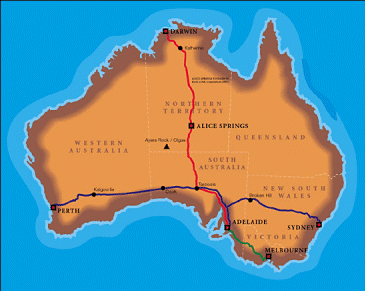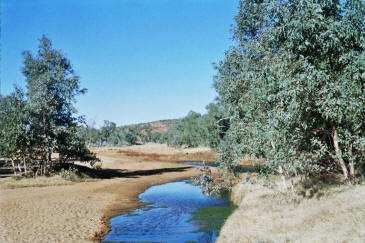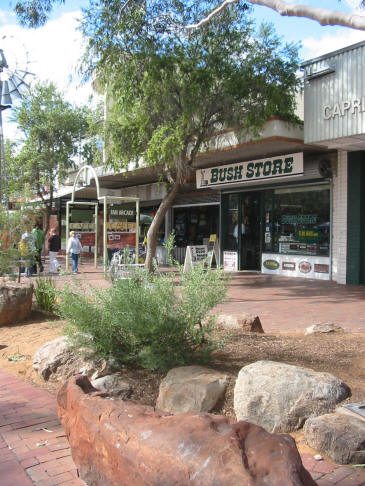Alice Springs, An Oasis In The Center Of Australia
Wonderful Vacation; Like Visiting Old Friends
Alice Springs
Alice Springs is a town and the second largest centre in the Northern Territory of Australia.
Popularly known as "the Alice" or simply "Alice", it had a population of 26,486 in 2005. Averaging 576 meters above sea level, the town is nearly equidistant from Adelaide and Darwin, close to the geographic centre of Australia. The site is known as Mparntwe to its traditional inhabitants, the Arrernte, who have lived in the Central Australian desert in and around what is now Alice Springs for more than 50,000 years.
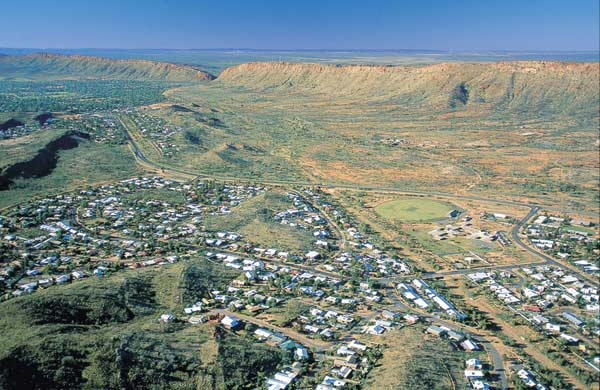
Aerial views were spectacular
Set amidst a harsh and stunning landscape, Alice Springs has struggled against the odds and remained in existence, having become a bustling town at the base of the famous and breathtaking MacDonnell Ranges. Aboriginal people are believed to have inhabited the surrounding land for possibly as long as 60,000 years.
Their unique insights and knowledge of the land can be touched upon on one of many Aboriginal tours. Despite modern times and pressures to change, their brand of desert arts and crafts are still very much alive, providing a link to numerous traditions of their ancestors.
In 1888 the town of Stuart began to appear and grow. Its name was derived from the famous explorer John McDouall Stuart and this remained the name of the town until 1933. In that year the Alice Springs Telegraph Station closed down and the town took on the name of Alice Springs.
As the goldfields developed and the number of pastoralists increased, this added to the incentive to expand the town. It outgrew its town image, becoming a bustling city and improved roads (Stuart Highway was bituminized) and rail links (1929 saw the completion of the rail line from Adelaide), plus the setting up by E.J. Connell of an Alice Springs based airline, opened up the region and marked a period of transformation, during which tourism became a key factor.
Alice was the military base and administrative headquarters for the Northern Territory during the second World War, indeed General Douglas MacArthur, the American General, was based here for some time.
Ristoranté Pucini
Amazing, 1000 miles from anywhere and this restaurant was five star. We stayed at the Plaza Hotel Alice Springs. Crowne Plaza Alice Springs combines luxury, elegance and resort style facilities. The hotel offers a wide range of services for the leisure and business traveler in a relaxed and stylish environment. Just outstanding for being 2,000 miles from anywhere!
The Royal Flying Doctor Service
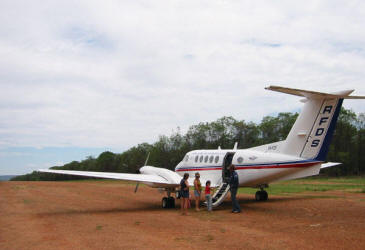
The only was to get doctors service across the miles
A "must see" is a tour of the RFDS Base to learn more of this unique aero medical/communication/emergency service so vital to all who work or travel in the Outback. See and hear the vital communications network in action.
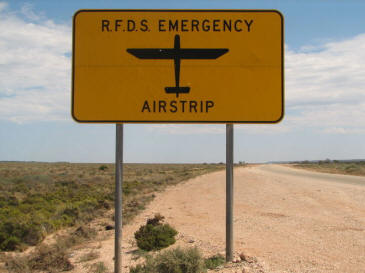
Miles and miles of miles and miles
Fly, via video, with the real flying doctors and nurses as they bring both routine and emergency medical care to the people of the isolated cattle stations and communities of this vast outback, and browse the historic exhibits in the Centre's museum.
The Springs At Alice
Australia/US Together
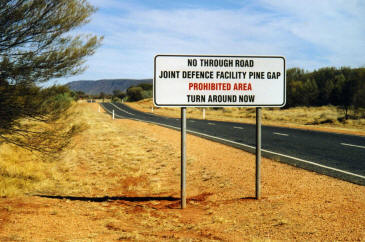
Great cooperation between our countries
The American influence in Alice Springs comes primarily from the proximity to Pine Gap , a joint Australian and US satellite tracking station, located 19 km south-west of Alice Springs. While Pine Gap employs 700 American and Australians, there are currently 2,000 people in the Alice Springs district who carry citizenship of the United States of America .

The dedert had food IF you knew where to look
Alice Springs Telegraph Station
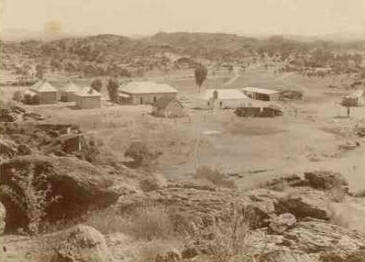
Not easy living 100 years ago!
The history of the Alice Springs is very much intertwined with that of the Overland Telegraph Line. It was back in 1870 that Overland Telegraph surveyor W.W. Mills came upon the waterhole around which a year later the Alice Springs Telegraph Station was established.
The town's name was derived from the name of the wife of the South Australian Postmaster General who was in charge of the construction of the Overland Telegraph. The Springs part of the name comes from the spring which exists north of the town, quite close to the Alice Springs Telegraph Station.
In 1872 station managers on their way to take over the operation of the stations at Barrow Creek, Tennant Creek and Alice Springs, found the trip very difficult in the harsh environment. These areas were very inaccessible in those days. One of the managers died of thirst and the remaining two only survived because they chose to turn back and resorted to drinking the blood of their horses to keep alive.
The Music
Waltzing Matilda
- Jumbuck is an Australian slang word for sheep
Squatter in this instance means landowner
Billabong means drinking spot or pool in an intermittent stream
Because of the very dry conditions in out-back Australia, streams and rivers can often become dry leaving only a few water-holes where stock are able to drink
This tune is a traditional Scottish Melody and the words are by A. B. Paterson who is generally referred to as Banjo Paterson. Banjo is one of our favorite poets.
Next Destination
Ayres Rock
was a short flight away as it is only about 250 miles.
